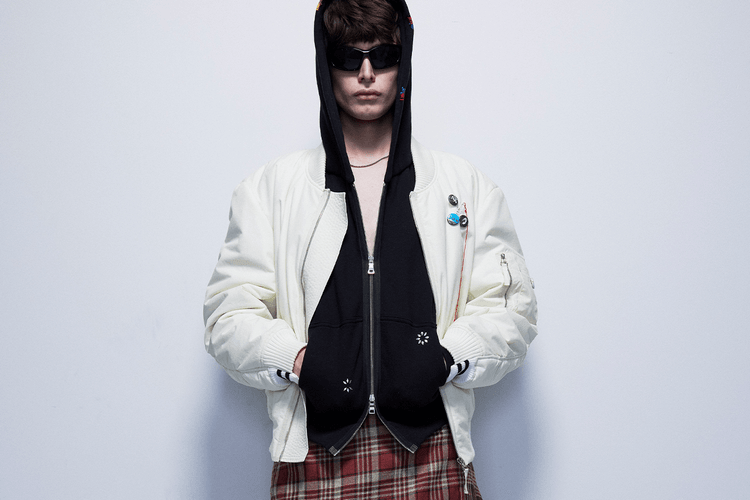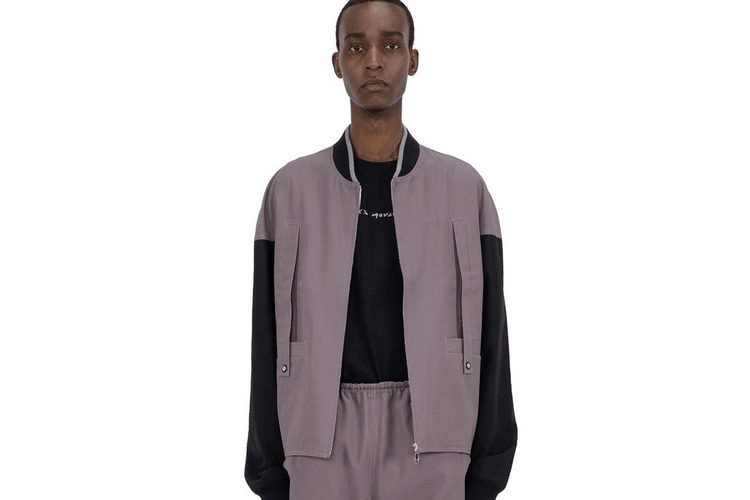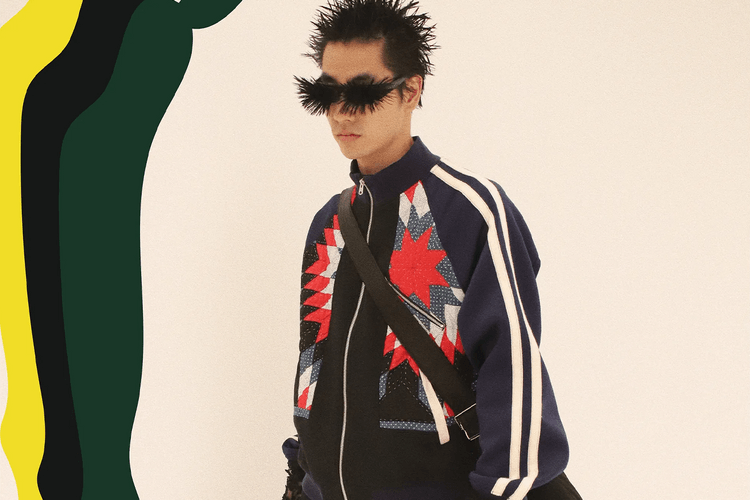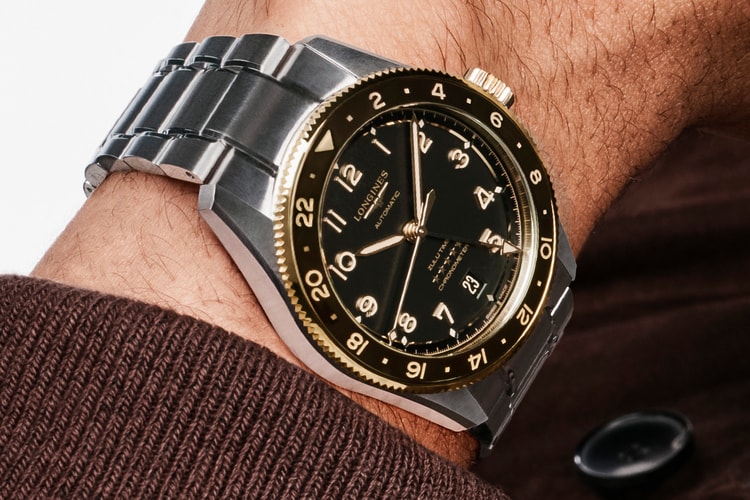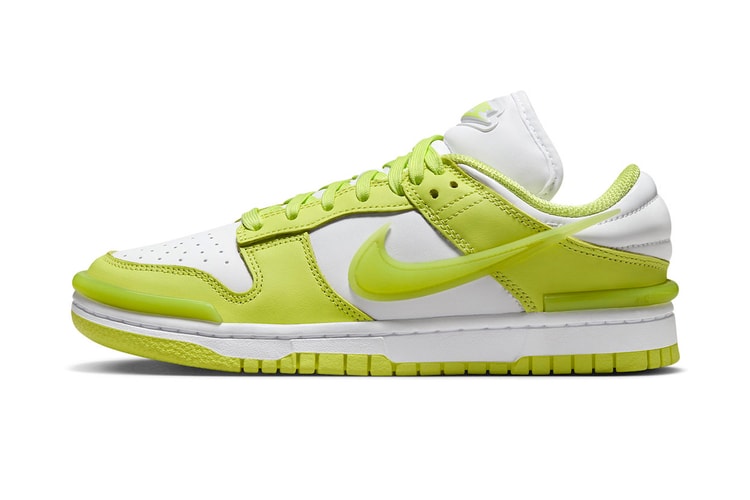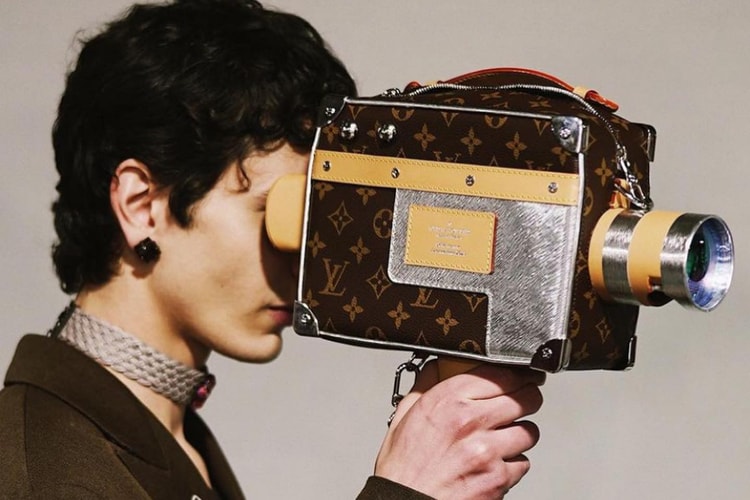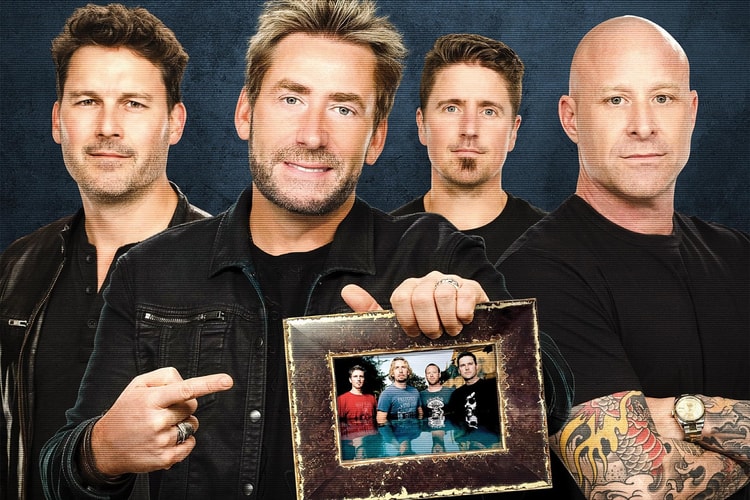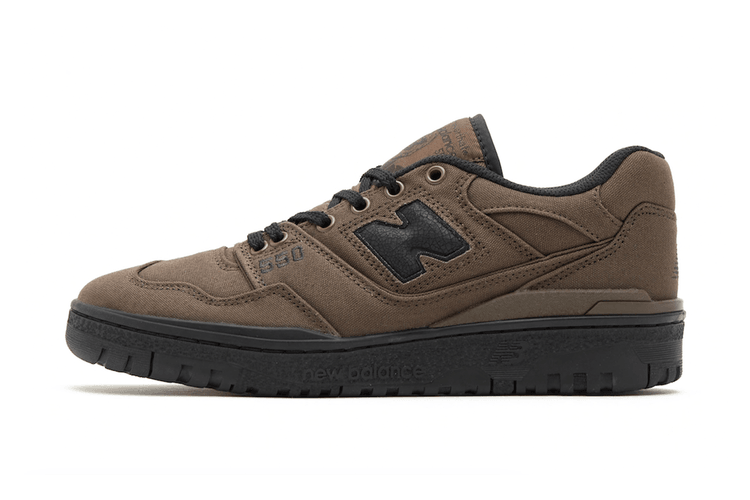Everyday is an Adventure for Nicolas "Yuthanan" Chalmeau
A conversation with the designer reveals how the Japan transplant embraced the country and its core values to build Sillage, a more meaningful clothing brand — in ‘Hypebeast Magazine’ Issue 31.

Everyday is an Adventure for Nicolas "Yuthanan" Chalmeau
A conversation with the designer reveals how the Japan transplant embraced the country and its core values to build Sillage, a more meaningful clothing brand — in ‘Hypebeast Magazine’ Issue 31.
It’s difficult to describe the allure of Japan. Surely nowadays, in the hyperconnected world we live in, you can find the same fashion, food and technology no matter your location. But there is something that still persists about Japan that cannot be found anywhere else in the world.
Historically speaking, this stems back to the 1600s during the Edo period, in which Japan, fearing the spread of Christianity from Spanish and Portuguese missionaries, began to close off its borders. Known as Sakoku, which literally translates to “chained country”, Japan began developing each aspect of civic life to its own unique customs. This lasted until 1868, an exorbitant amount of time for a country to be isolated from the world. Much has been written about the ramifications of the Shogunate’s (military dictatorship) strict policies, especially on the lower classes, but amongst the positive outcomes, Japanese life during the Edo period was sustainable and slow-paced, centered around wasting as little as possible and appreciating quality — values that are still held today.
Caught between the old world and the new, the country continually reinvents itself with one foot planted in its distant past, while the other high above, slamming towards the future. Nowhere is this more present in Japanese society today than in its myriad forms of pop cultural exports— anime, manga, the list goes on.
Nicolas Chalmeau, better known by his middle name, Yuthanan, didn’t care for any of that. Nor did he have any real interest in Japan, before going on an impromptu trip with a friend when he was 15. Born in the 11th arrondissement of Paris to a French father and a Thai mother, Yuthanan had an early interest in the fabrics and textures of modern clothing. Unlike Japan, France does not have a strict uniform for students, so he remembers being able to express himself early on as a kid. He also recalls hearing people make fun of him from a distance for some of his fashion choices, but he paid it no attention—a resilience that helped shape his career path later in life.
It may look like Yuthanan had everything figured out, but by no means was his life linear. He dropped out of high school when he was 16 and worked any fashion related jobs that would hire him—from shop staff to manager, wholesale to sales, to director, designer and photographer. “I did everything from the bottom, so I experienced everything,” he says.
Yuthanan eventually worked at several Japanese brands and retailers while saving up to move to Japan—an ambition that he was dead-set on after coming back from that first trip. Funnily enough, prior to leaving, he spent nearly all of his saving on Lemaire and a stream of new fits so he could look his best for interview upon arrival as he didn’t have a job lined up.
With only €1,000 Euros to his name, Yuthanan had just enough to afford a month of rent in a tiny apartment. Thankfully, he landed a job with a local brand and would eventually be in charge of its PR, marketing, as well as photography, despite having little training in the medium. Six months later, he left as he did not enjoy the rigors of Japanese work culture.
Yuthanan wasn’t built for the nine-to-five, not in the traditional sense at least. Instead, he always followed his passions, to the point where they took him over 6,000 miles eastward where he met his wife and began his label, Sillage. The brand is very much a reflection of Yuthanan’s far reaching interests—from Indian and Indonesian textiles and spiritual objects found across Africa and the Middle East, to his own French heritage and the craftsmanship well-revered in Japan.
As the brand’s motto goes, Sillage is “Inspired by the world, made in Japan,” a simple but powerful ethos that has galvanized a like-minded collective of people from across the globe. Instead of following the fashion cycle, he releases small capsules throughout the year to better match the many ideas that orbit in his mind. Unlike virtually all brands, however, Sillage only offers one size for most of its garments. Roomy and oversized, each article is made of the finest materials and craftsmanship, draping over the wearer and freeing the body of its rigidity.
Amongst many things, Yuthanan is living proof that you can follow your passions and galvanize a global community, regardless of your background or level of expertise. As members of that community, we caught up with Yuthanan to discuss Sillage’s genesis and what the future has in store.
“The most important asset in someone’s character is being curious.”
How has the transition to living in Japan been?
Yuthanan: It’s a country that’s almost 6,200 miles away from France, so it’s completely different. The culture, the regions, the food. But if you have the chance to come, you’re already halfway there. The other half requires you to adapt. That’s not for everyone. There are not many foreigners in Japan. In Tokyo, I know almost all of them. It’s a reset to the way you think. Of course, you keep all the knowledge and experiences you’ve known from previous countries, but you have to find a balance between both worlds.
Japan already has a system that is working without you. As a foreigner, your value is far less than that to a Japanese citizen. You need to make yourself accepted in this market. Like a USB drive or an SD card, you need to find your port and plug yourself into the society. It’s difficult to start, but once you have space, you can make it grow. After six years, I can say that I’ve found my way to contribute to society through fashion.
From an outsider’s perspective, you can pass for Japanese through the way you present yourself via Instagram. Now that you’re fully assimilated in the culture, with a family as well, what about daily life in the country most inspires you?
Y: I’m lucky to work as a photographer and director. My team is here and we work with many different brands and magazines to create content. Through this, I’ve had the opportunity to travel around the country to find locations. Tokyo is just one percent of Japan. If you travel one hour north, you’re in the mountains; you go left, you have Fuji; south is the beach. There are so many different ecosystems in Japan.
Daily life here is unreal. I don’t really have any negative things to say about Japan. Of course, there are flaws, but there are so many good things about this country that it makes sense why so many people around the world love Japan.
It’s number one in a lot of things. I’m French and I love my country. The food is great. Paris is so old and beautiful. I think France created cuisine, but Japan mastered so many things. There is a timeliness to everything in Japan. Unlike some things in Europe, when you buy something here, it is meant to work for a long time.
Can you talk about the genesis of your brand Sillage?
Y: It was very random. Before quitting my previous job, which was my only job in Japan before my brand, I went to a party in Tokyo and met my wife that night. It was my first month here and I wasn’t really looking to party. I was only focused on my work. Having a girlfriend or even a wife was not in my head.
She introduced me to her friend, Masa, who is now my partner for Sillage. He saw my struggle at the shop and told me “You should make something,” because I had 5,000 followers. At that time, 5,000 was a lot, whereas now, it’s common to have 100,000 followers. “You don’t like your job, so let’s find a way to earn money and do something fun,” he said.
I had an idea in my head which revolved around pants. For me, pants are the most important part of your fit. It should create your silhouette. The first item I designed was the Hakama pants. I was never into anime, but I always liked the big wide pants that people wear in judo, kendo and traditional hakama style. I used my knowledge from fashion school to draw the pants and gave the drawing to Masa, who has 16 years of experience in the industry. He’s worked as a buyer and knows a lot of different factories in Japan. I had no money to invest, but he said, “I’m going to invest in your first sample and make it. You promote it via Instagram and it’ll start with a preorder.”
I only had a small compact camera at the time, but ended up using all my savings to buy a Canon 6D Mark II. I practiced for months in the streets, night and day, until the sample was ready. I shot the first campaign with my friend. Masa was in charge of production and I did everything else, like the marketing, image, etc.
It took a while for the preorder, about two months of waiting. Nobody wants to wait two months to receive a pair of pants. When I first launched, I got maybe five or six orders on the first day. Step-by-step, I got enough money to invest in another sample and after a few months, I could buy a stock and get rid of the preorder. It’s been five years and we’re launching items almost every week now, but I still do everything not related to production.
Your aesthetic is oversized, but it clearly has a unique spin on both Japanese silhouettes and timeless garments. What’s your ideation process like—from how you source your fabrics to the vendors you work with to create the final product?
Y: My brand is Japanese only because it’s made in Kyoto, Okayama and Wakayama, but I will not say the design is Japanese. The design is more French, because of my own nationality. I didn’t really copy the Hakama pants, it’s my interpretation of them. It’s only “Hakama” in name, really. My brand is my vision of Japan.
Japanese brands size very small. I’m about six-feet-tall and cannot find many clothes my size. I like many brands here—Comoli, Auralee—but they’re all too small for me, so Sillage was also a way for me to find clothes for myself. It’s fun to think of it in that way and the design process is very easy.
I see so many brands who are just copying each other. There’s so much in the world and things created by our ancestors that can be used as inspiration. But if you don’t travel or take time to research, you cannot make good clothes. I would say the most important asset in someone’s character is being curious.
My brand is made in Japan because the quality is best in the world. But in terms of design, it comes from everywhere and I like this mix. Of course, you need to respect the country that inspired your collection. Many brands just copy-and-paste.
I rework traditional items and make them more contemporary because they’re for people in our times and must be wearable. I also only do oversized because I want people to wear oversized. I’m born in France and there is this culture of skinny everything. Are you really happy in these clothes? They’re tight and uncomfortable. My way of telling people to stop wearing skinny is to make Sillage oversized and one size—people have no choice. Although it’s one size, we engineer our clothes in a way that it fits everyone. We always use raglan sleeves, for example, so it will always fit well. If there is a problem with length and sleeves, it’s always easy to amend that at your local tailor, but the body shape and width should always be wide. I like the beauty of layering and mixing textures and colors.
An outfit is a way to tell the world who you are. It’s not just about expensive clothes or money. Anyone who has a body can express themselves through clothing. In Japan, people are sad and always wear blue or black. Even in cars, it’s similar to France, where everyone buys white or grey colored cars. It’s sad that people don’t show who they are. I was happy to hear that a Sillage customer let me know how happy they are to express themselves now. That’s one of the goals of Sillage: to allow people to express who they really are inside.
“An outfit is a way to tell the world who you are.”
Can you elaborate more on the dichotomy between Japanese fashion and Western fashion?
Y: In France, Europe or the USA, a lot of people have forgotten that price isn’t everything. You also need to look for quality. That’s why I make clothes in Japan. Sillage is not cheap, but not as expensive compared to other brands. Sure, you may be able to buy two pants from another brand for the same cost of one pair from Sillage. But it’s better, in my opinion, to buy one pair of high-quality pants than two mediocre pairs. There’s so much waste through fashion and it’s so bad for the environment. My way of fighting that is to encourage people to buy good clothes.
The Antique Collection, in particular, shows so many different cultural reference points—from Indian, to African, to Nepalese textiles. Who is in charge of the illustration work that goes into the clothing?
Y: The design itself is based on the silhouettes of our regular collection. We have artisans and craftsmen who are great at patchwork, like an amazing woman in Tokyo who created the whole collection. We send her fabrics we source from around the world and we trust her to craft the collection from there.
The main reason for doing individual collections is to showcase what I’m into in the present moment. That’s why we have a very short launching date and need to launch every week. I’m always finding new inspiration and changing my mindset. Once I finish an idea, I go to the next one. I don’t wait on seasons, I do it now. If there is an artist I want to work with, I tell them, “Let’s do it next month.”
In terms of the Antique Collection, I’m constantly sourcing via Instagram and buying fabrics when I travel. I have two separate entities: Sillage and my What We Wear store. The latter is focused more on items that I can’t sell on Sillage but are still important to the brand’s community, like home goods and accessories.
The brand is such a reflection of yourself, what has been your favorite garment or collection thus far?
Y: The most fun is the Antique Collection and using old fabrics, because I like the fact that we’re creating something new from the past. Some people say that you’re destroying history, but I don’t think so. If a young person wears an antique piece, it’s a nice way to make it even more timeless. I trust my community and people who buy Sillage. They will not trash it and will rather take good care of it. It’s a great way to pay tribute to history by working with these antique fabrics.
What’s next, for brand and agency?
Y: Sillage has been around for about five years and, I just started my own agency, Yuthanan. Six years ago, I got into photography and step-by-step, I accrued more clients. Back then, however, I had no idea how a camera worked. It’s crazy that in that time I’ve learned enough to create an agency with a team of professionals—filmmakers, producers, everything. I’m really thankful to everyone who has trusted me throughout.
I also just launched my soap brand, Onze, which is where I’m born—the 11th arrondissement in Paris. The recipe is inspired by the Savon de Marseille, from the South of France, with Japanese ingredients. So it’s a mix of Japan and France.
Besides that, there are so many projects I want to work on—for example, a Land Rover garage in Japan.
What advice would you give to someone who reminded of your younger self, someone who was moving to a faraway country to begin their career?
Y: You need to find the courage and it takes a lot of time and effort to move. Once you have the financial means to move, then you’re already halfway there. The reason I bought a Land Rover Defender is because that car represents adventure and my life represents that. Everyday life is an adventure.
If you don’t try, you won’t make it. Everyone has something to give to the world.
HYPEBEAST Magazine Issue 31: The Circle Issue is now available on HBX.










